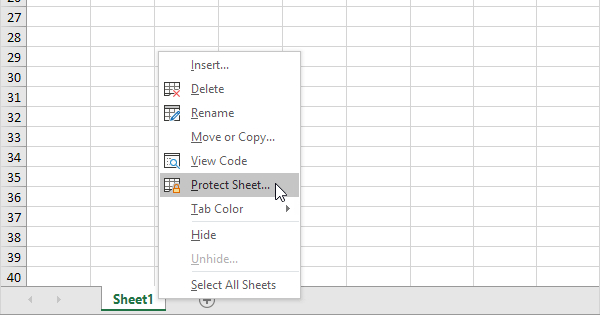Secure Your Excel Data: Setting a Sheet Password Easily

When working with sensitive data in Microsoft Excel, one of the fundamental security measures you can take is to protect your worksheets with passwords. This not only helps in keeping your data confidential but also prevents unintended modifications. In this detailed guide, we'll explore how to set, modify, and manage passwords for your Excel sheets, ensuring your data remains secure.
Why Set a Password on Your Excel Sheet?

Excel sheets often contain critical information such as financial reports, personal data, or project details. Here’s why you should consider securing your sheets:
- Privacy: Ensures unauthorized individuals cannot access sensitive information.
- Data Integrity: Prevents accidental or deliberate modifications that can affect the accuracy of data.
- Control: Allows you to control who has the ability to view or edit the sheet.
Setting a Password in Excel

Follow these steps to set a password on your Excel worksheet:
- Open the Excel workbook where you want to protect the sheet.
- Go to the Home tab, click on Format in the Cells group, then select Protect Sheet….
- A dialog box will appear where you can:
- Set a Password to open or Password to modify.
- Choose what users can do even if the sheet is protected.
- Enter your desired password in the “Password to open” field. Remember, passwords in Excel are case-sensitive.
- Click OK to confirm. Excel will prompt you to re-enter the password for verification.
- After setting the password, your worksheet will now be protected.
Modifying the Password

If you need to change the password:
- With the worksheet protected, go to Home > Format > Unprotect Sheet.
- Enter the existing password to unprotect the sheet.
- Once unprotected, follow the initial steps to set a new password.
Removing the Password

To remove a password:
- Access Home > Format > Unprotect Sheet and enter the current password.
- Leave the password fields blank in the dialog box and click OK.
📝 Note: When you remove a password, ensure you're ready to either accept changes by others or have backups of your data. Always back up your Excel files before making significant changes to the worksheet settings.
Advanced Protection Features

Beyond simple password protection, Excel offers more nuanced ways to secure your data:
| Feature | Description |
|---|---|
| Cell Locking | Lock specific cells to prevent editing while allowing changes in others. |
| Hide Formulas | Conceal formulas from being viewed or copied by others. |
| Workbook Structure Protection | Prevent adding, deleting, or renaming sheets within the workbook. |

These features can be accessed by navigating to the File > Info tab and selecting Protect Workbook or Protect Sheet to fine-tune your security settings.
💡 Note: While these additional protections enhance security, they should not replace password protection, which is still the first line of defense for your data.
Best Practices for Password Management

- Use Strong Passwords: Employ a combination of letters, numbers, and symbols.
- Regularly Update Passwords: Change your passwords at regular intervals or when you share your workbook with new users.
- Limit Sharing: Only share passwords with individuals who need access, using secure communication methods.
- Backup Before Protecting: Always back up your workbook before applying protections to avoid data loss if passwords are forgotten.
By implementing these practices, you not only protect your Excel data but also ensure that the security measures you apply do not impede necessary work or collaboration.
Key Takeaways

In summary, protecting your Excel sheets with passwords is an essential step in maintaining data security and integrity. Here are the key points to remember:
- Setting passwords to open or modify Excel sheets helps keep your data private and secure.
- You can easily modify or remove passwords as needed, providing flexibility for collaborative environments.
- Utilize advanced protection features like cell locking and formula hiding for an additional layer of security.
- Follow best practices for password management to ensure your security measures are effective.
Excel's security features, when used wisely, can significantly reduce the risk of unauthorized access or data tampering, allowing you to control and manage your spreadsheets effectively.
Can I protect only specific cells instead of the entire sheet?

+
Yes, you can lock individual cells. First, unlock all cells by selecting them and setting them to ‘unlocked’. Then, select the cells you wish to protect, set them to ‘locked’, and protect the sheet as usual. Users can still see data in unlocked cells but can’t edit locked ones.
What happens if I forget the Excel sheet password?

+
Without a password, you’ll be unable to access or unprotect the sheet. Make sure to keep your password in a secure location or use password management tools to remember it.
Is it possible to share an Excel sheet with password protection?

+
Yes, you can share an Excel sheet that is password-protected. However, the recipients will need the password to open or edit the sheet. Share the password separately through a secure communication method.